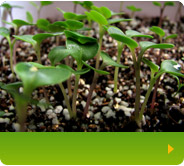 Growing hydroponic tomatoes is one of the most popular and easiest plants to grow. Hydroponic tomatoes are grown in a nutrient solution instead of soil, which means they can be grown indoors, away from natural light. This results in much faster growing and higher yields. It involves the following series of steps:
Growing hydroponic tomatoes is one of the most popular and easiest plants to grow. Hydroponic tomatoes are grown in a nutrient solution instead of soil, which means they can be grown indoors, away from natural light. This results in much faster growing and higher yields. It involves the following series of steps:
- Choose an area to grow your plants
- Raise some tomato plants from seeds
- Place the seedlings under light
- Transplant your seedlings
- Drip feed the plants with water and nutrient solution
- Expose the plants to 16-18 hours of light each day
- Monitor the pH level
- Regulate the temperature
- Stake and prune the plants
- Use a paintbrush to pollinate the blossoms
- Leach the pots
- Monitor your growth
One of the most popular applications of our Perlite products is in hydroponic gardening. You may think that this technique is only used by large-scale commercial growers and marijuana users with illegal plantations, however anyone who appreciates great tasting, fresh fruits and veggies can set up a hydroponic system in their own home.
Here’s our quick guide to help you set up your first hydro system.
- Choose an area to grow your plants: If you have a sunny balcony or access to a greenhouse, fantastic! Most of us aren’t so lucky though, so it’s a good thing you don’t need natural light. A spare room or even a cupboard will do fine so long as you have easy access to a power source.
- Raise some tomato plants from seed: It’s best to start from scratch instead of trying to transplant from a soil based garden. Start your seeds off in a nursery tray using rock wool starter. The rock wool should be soaked and the pH adjusted to 4.5 before the seeds are added.
- Place the seedlings under light: The moment they start to sprout, place your seedlings under a metal halide light. Keep the light on for 12 hours per day and don’t let it shine on the roots as it can damage them.
- Transplant your seedlings: When the seedlings have grown big enough for the roots to protrude from the bottom of the tray, it’s time to transplant them to individual pots. Move the plant and the rock wool together and fill each pot with Exfoliators Premium Perlite.
- Drip feed the plants with water and nutrient solution: Hydroponic plant nutrients can be purchased from most nurseries. These are mixed with water, which is then drip-fed to the plants. There are several types of automated drip systems you can purchase or build for yourself. The easiest to assemble is a top-down drip system. Place a reservoir underneath the plants and fill it with the water and nutrient solution. Use a pump and irrigation lines to bring water from below and drip it into each pot. The water should be allowed to drip through the Perlite in the pots and drain back into the reservoir. Run the drip for the entire day and replace the solution once a week.
- Expose the plants to 16-18 hours of light each day: If your hydroponic system is indoors, set up growing lamps and hook them into automatic timers so you don’t have to remember to turn them on. Leave the plants in complete darkness for 6-8hrs per day.
- Monitor the pH level: Tomato plants require a pH of between 5.8 and 6.3. To lower the pH, add phosphoric acid, or to raise, add potassium hydroxide.
- Regulate the temperature: Use fans or your home air conditioning to keep the temperature at 18-24C during the day and 12-18C at night.
- Stake and prune the plants: Help your plants grow upright instead of sprawling out to the side by pruning them and attaching the stem to a stake.
- Use a paintbrush to pollinate the blossoms: As soon as the stigma appears, use a soft paintbrush to grab pollen from one plant and transfer it to the stigma of another.
- Leach the pots: Salt can build up around the roots of your plants. Leach them in clean water each week when you change the nutrient solution.
- Monitor your growth: Harvest when ready and enjoy! You’ve got the veggies sorted, consider planting some hydroponic strawberries so you can enjoy some delicious fruit as well?
After mastering the art of growing hydroponic tomatoes, ensure they thrive with Exfoliators’ top-quality vermiculite.











